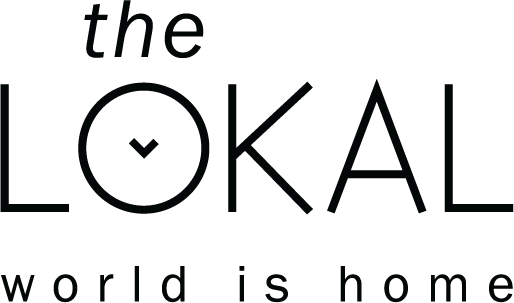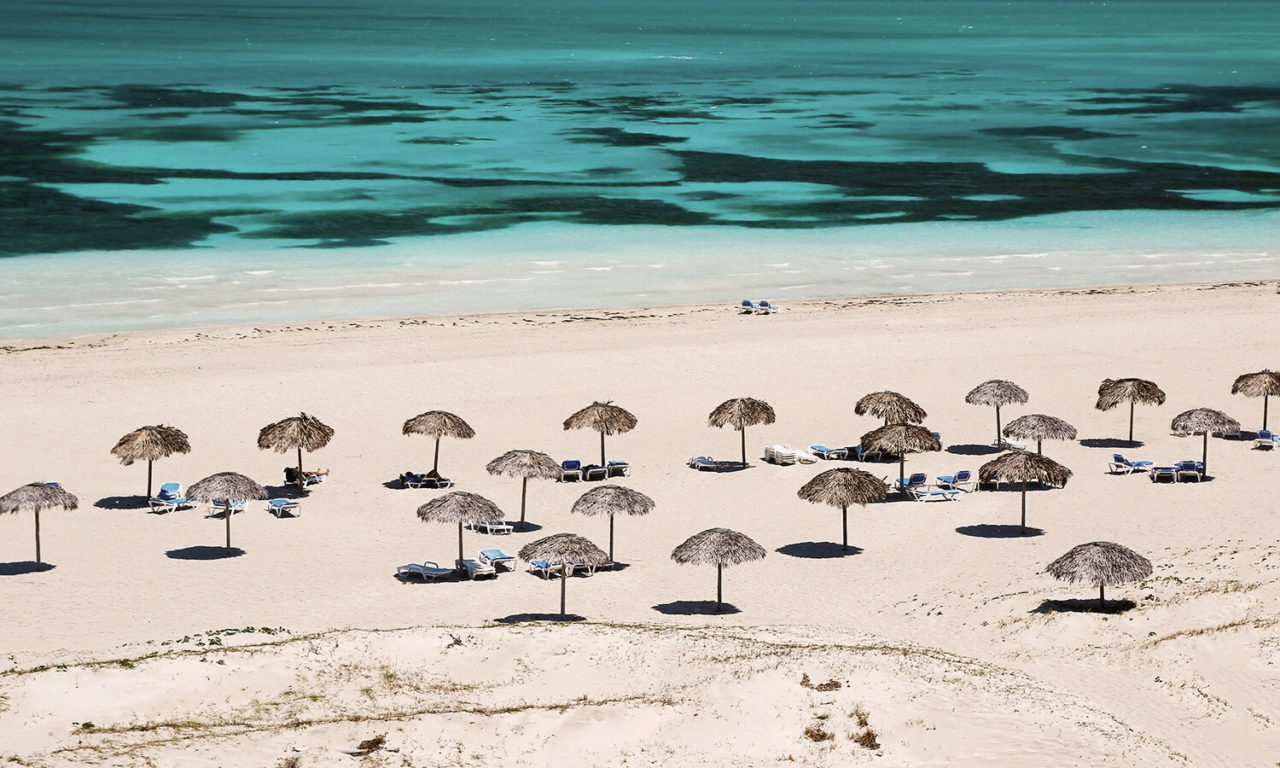STORY – Katya Buluy | Bogota, Colombia
PHOTOS – Maria Pozdneacov
We continue our story about one of the most legendary and contradictory islands – Cuba (see part 1 about the Cuban capital, Havana). This destination is good not just for colorful architecture and vibrant cultural experience, but also for endless white-sand beaches.
Part 2.
VARADERO
THREE HOURS in the comfortable and air-conditioned (believe me, it’s vital) Cuban bus, on the flawless flat Cuban highway, with a picturesque view of the seashore all the way, brought me from Havana to even sunnier Varadero. Geographically, Varadero is a narrow strip of land that trails into the ocean. The main street divides the resort community into two parts, with three or four rows of houses on each side. It takes only 10 minutes to walk from one coast to another. There is a couple of small shopping centers, one currency exchange, one Internet cafe, and miles of snow-white beaches with transparent turquoise water.
The Caribbean Islands feeling, with a lot of sun, chill atmosphere, good strong Cuban coffee, old cars are driving around everywhere, the smell of strong Cuban tobacco in air, and the fluent Cuban speech. Does it sound like the declaration of love? Because it is.
BEFORE GOING TO VARADERO I made a small list of places — where to go and what to see. There were some caves, some well-known colonial style house on the hill, Casa del Ron — the House Of Rum, etc… But the moment I got there, I just fell on the sand, with my feet in the sea, sunglasses on my eyes, and a mojito in my hands. The list just disappeared…
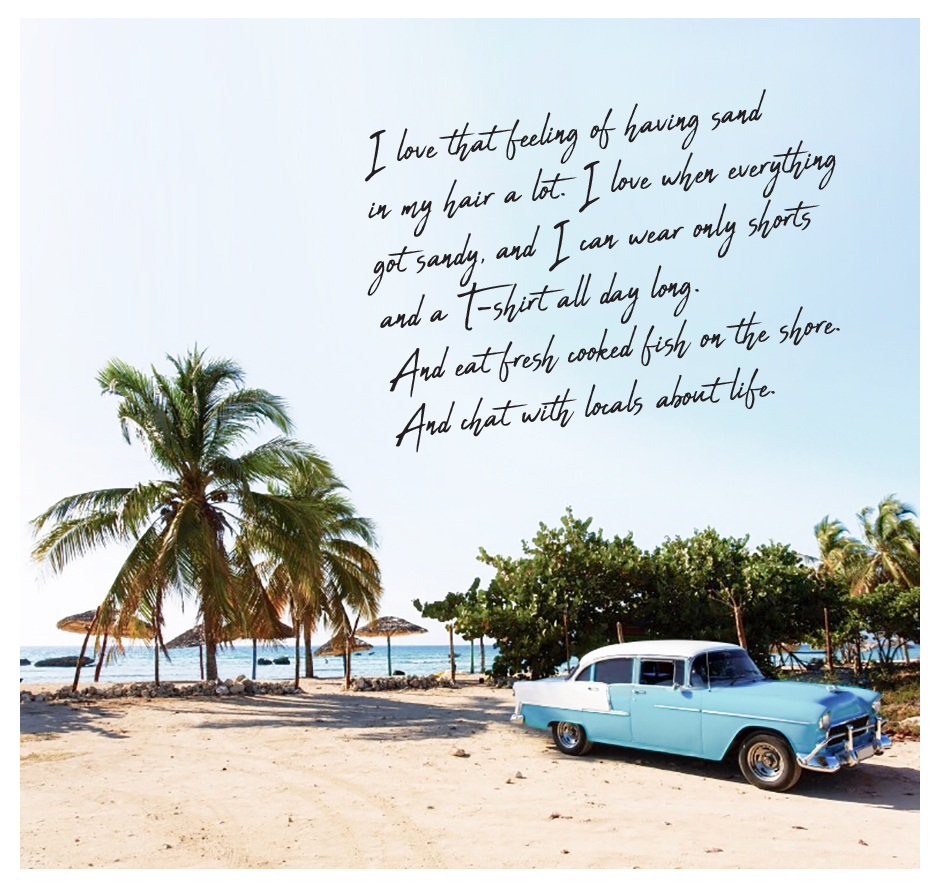
HOW DO THE DAYS PASS ON VARADERO? They are lazy, not hasty: Everything opens around 9 or 9:30, so it is really doesn’t make any sense to wake up earlier. Stock up with patience because nobody is in a hurry, and it extends to the services industry as well. Locals are constantly busy with something in their cafes, restaurants, and shops, and don’t pay attention to customers. So just relax!
IF YOU ARE LONGING for some solitude on a beach, it is the place to be. The beach is extremely long here, and not that many people are out there. I was pleasantly surprised! Usually, beaches are crowded and noisy, but here it is pure serenity.
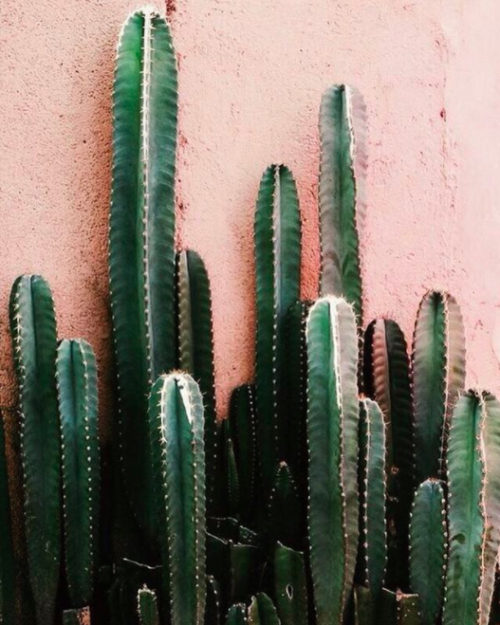
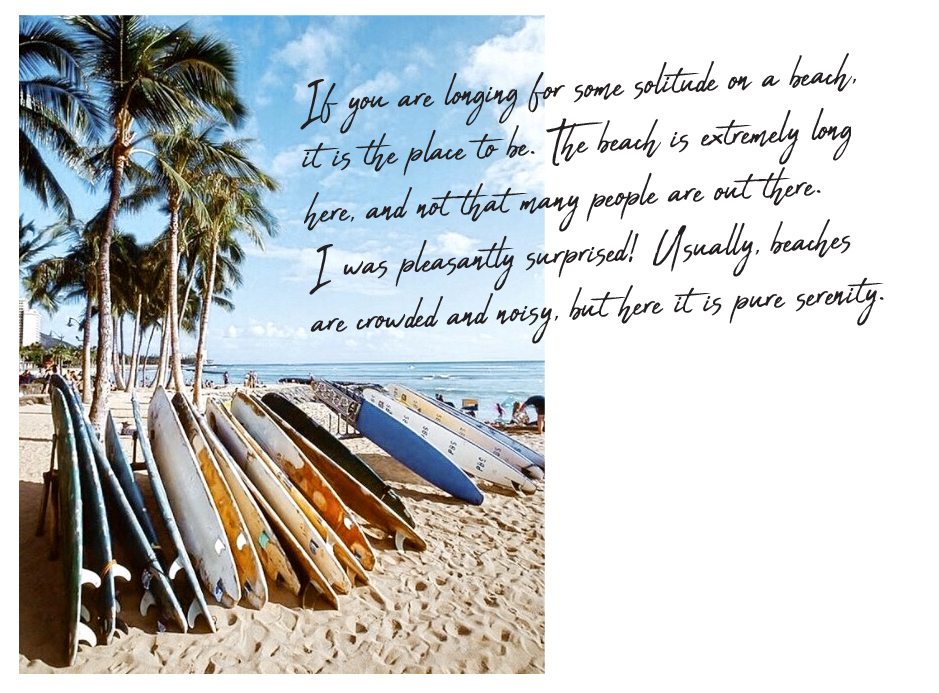
ADDITIONAL NOTES
HOUSING
What is “casa particular”? A private house where Cubans live and lease some rooms to tourists. Here are the reasons why it was interesting for me to stop in such house: it isn’t expensive; it is a good opportunity to observe life of Cubans; to chat (though it is possible to chat with Cubans everywhere, they are very sociable people!) and to start a friendship, especially if you decide to return. At the house, it is possible to make agreements with a host/ess with regard to food — many offer breakfast and lunch in the house (for an additional fee). In Havana, I was very lucky with a casa particular; the house was very beautiful, and the hostess, Doña Vicki, was a very pleasant and talkative woman. In Varadero, I was not very happy with either hostess, unfortunately (unfriendly and bluff) or her house. She was doing laundry nonstop, and the noise of the washing machine around midnight drove me crazy. I even didn’t want to say goodbye prior to my departure. When I was booking the room she didn’t list her laundry habits …
PRICES
Cuba has some duality with pricing. There are prices for locals, and different prices for tourists. Here are some examples, and you can make your own conclusions. For a one-day stay in a casa particular I paid 25 euros. In most cases there is always a king-size bed in a room, sometimes even an additional smaller bed or a pullout couch. So if you travel with a friend or a significant other one, you can always split a charge. A bus ticket from Havana to Varadero costs around 10 euros one way. To save money, always purchase it in advance from Viazul bus line website. A taxi ride from the airport to Havana is around 30 to 40 euros (you can always find a company and share the charge). Usually, drivers find additional travelers, and it reduces the price. A taxi ride from Havana to airport is around 20 to 25 euros. An entrance to Museo Nacional de Bellas Artes would cost you 8 euros. Breakfast is around 2 to 3 euros; lunch is from 6 euros (a modest one) and above; dinner will run you the same; and a mojito or daiquiri or any other cocktail costs about 2 euros; a cup of coffee is anywhere from 50 cents to 1 or 2 euros, depending on the place; a small bottle of water or a can of soda is about 1 euro. And so on. There are even cheaper options like pizza, hamburgers, and sandwiches (2 to 3 euros), but I personally prefer to try local authentic cuisine.
INTERNET
Internet access is very limited here. A few years ago there was no Internet at all on the island, however. These days, to get Internet access you have to buy a special card (2 to 3 euros), find a place with WiFi (it can be a public park, shopping center, or a hotel), enter username and password from the card and voila — you will receive an hour of Internet service that allows you to feel a citizen of the world, but not a hostage of the island. The Internet is pretty slow usually, however, but at least it allows you to write a couple of words to the family, and even to post several photos on Instagram. Though I did observe some Cubans being able to talk on Skype… maybe it was just my phone, an iPhone 5, that persistently rejected the connection to What’sApp so I could not stay in touch with my family. Personally I even enjoyed this WiFi detox. That disconnect, in the end, felt very nicely like a real vacation.
GIFTS & SOUVENIRS
What have I brought home from Cuba? A lot of paper! Three books, postcards, newspapers (well, how not to bring the latest news from Havana?!), and (by means of one Cuban guy) I even managed to get a note of three Cuban pesos with Che’s portrait. In Cuba, there are two types of bank notes that circulate: CUC is only for tourists, one “kuk” is approximately equal to one euro. And another — a CUP is a Cuban peso for Cubans. One “kuk” is about 25 “kup.” And as a result, an outsider tourist can’t really see real Cuban money (those which Cubans use) during stay on this island.
In conclusion, I want to wish all of you the chance to go to Cuba, and for myself … I wish to go there once again. Go now, because no one knows if “The Island of Freedom” would be free in a couple of years.

